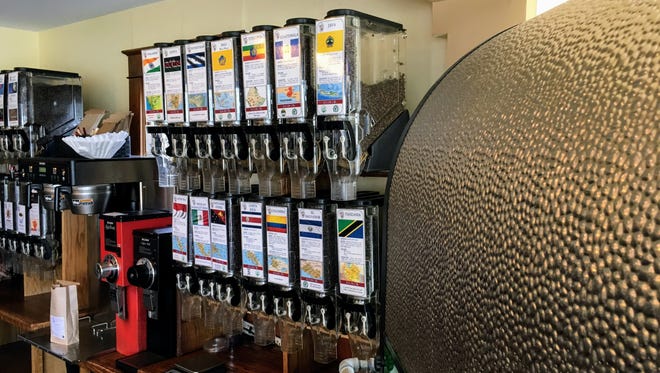Coffee has changed and cold brew is only the beginning

Everybody is into something, and if you are among those immersed in coffee culture, cold brew coffee may have been part of your life for the last few years.
If you aren’t, then this has been an educational summer, as cold brew has gone from something you think you might have heard of to something you can’t escape (and likely drink with some regularity).
According to Sean Hixon, roaster at The Point Coffee House and Bake Shoppe in Rehoboth Beach, the mass-market embrace of cold brew is a natural outcropping of the creative process roasters undergo. As with any other culinary art, roasters are trying to challenge what they do. Sometimes they fail big, other times they affect a cultural shift.
Cold brew is undeniably the latter.
In a span of just a few years, cold brew went from something esoteric, popular among die-hard coffee heads, to convenience store shelves. It's developed the kind of following that makes it a year-round, rather than just a summer drink.

Broadly speaking, there are three ways to prepare coffee cold: iced, Kyoto and cold brewed.
Iced coffee probably is as old as coffee and ice. The Dutch explorers would make a coffee concentrate that stored and transported easily, Hixon said. They would add it to hot water or cold so long as the end result was a cup of coffee. Because brewed coffee can be a little bitter, iced coffee is something of an acquired taste and one to which people tend to adulterate with sugar, heavy cream and/or flavoring.
RELATED: Burley Oak opening coffee-inspired cafe
MORE: Back by popular demand, Pemberton Coffee house reopens
Aside from that, the dominant way to make coffee cold for most of history has been the Kyoto, named for the Japanese city that popularized it. Drip coffee is brewed using half the required amount of water. The other half is put into the cup in the form of ice.
“The brewing process releases the acids at a certain temperature,” Hixon said. “Dripping the coffee on the ice stops the chemical reaction.”
In the end, the coffee is cold, sweeter and has less caffeine (caffeine also is released in the brewing process). There are lots of factors, Hixon said, but beyond choosing the right blend, coffee flavor comes from the amount of heat and time the coffee is exposed to the water. The longer coffee sits in water, the more flavor (and acids and caffeine) extracted. Playing with these ratios is what gave rise to cold brewed coffee, which is completely different from iced or Kyoto-style coffee.
Last summer, Hixon made cold brew in weekly batches. This year, he’s been brewing gallons of it several times a week as its popularity hit critical mass. Setting aside the way it tastes when dressed up with sweet things, cold brew’s appeal has as much to do with its accessible, low acid flavor and its reduced levels of caffeine.

It is the perfect solution for people who want an afternoon jolt, but also want to get to sleep at a reasonable hour. Moreover, it doesn’t require sweetener the way hot brewed coffee does for some people. That said, throw a little almond milk in it and it’s practically an afternoon snack.
Hixon said this summer, people really started experimenting. Some local restaurants have it on a nitrogen tap making cold brew coffee sodas, essentially. Others have it barrel aged. There is a real “gloves off” aspect to roasting and brewing coffee in novel combinations using processes bound only by physics and the brewer’s imagination.
In the coming days, Hixon will be debuting his own take on the process.
“If it can work with coffee, I don’t see why it can’t work with chocolate,” he said.
To that end, he’s collected some cacao beans he will roast, grind and cold brew. The result, he hopes, will be a dark chocolate with all the flavor and none of the bitter. If it works out, he’s pretty sure it will be the next big thing in cold brew.
If you’re interested in making you own cold brew, all you need is coffee and time, but a French press is the recommended pot. Failing that, mix your coffee into the water and train it through a filter in the end. Maximum contact with water produces maximum flavor.
Hixon said to select a medium roast coffee for the best results.
“If your bean is dark instead of medium your coffee is going to taste like tobacco juice,” he said.
Use the same ratio of coffee to water you would use when hot brewing and place the entire pot into the refrigerator for 18 hours. Hixon prefers a full 24. If you’re grinding your own coffee, use a coarser ground than you would for an automatic coffee pot.
He said coffee coarse-ness should be proportionate for the amount of time the coffee is in the water. For example, espresso is essentially powdered while the grounds for cold brew are significantly more substantial. Similarly, the better and fresher the beans, the better the taste.
Hixon’s final tip is to try it black, first, to get a sense of whether you even want to add anything because great coffee often is great just on its own.